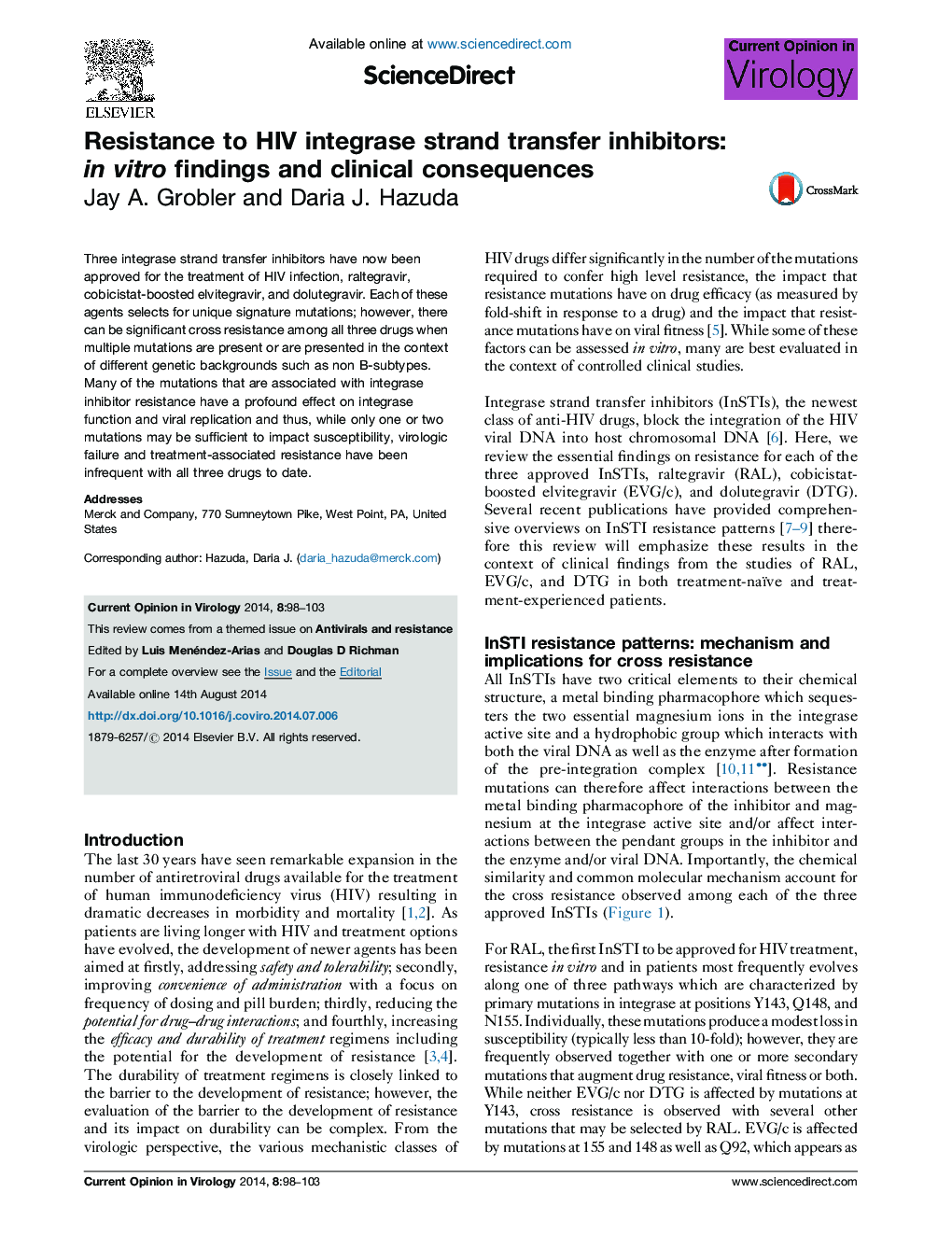| کد مقاله | کد نشریه | سال انتشار | مقاله انگلیسی | نسخه تمام متن |
|---|---|---|---|---|
| 5806768 | 1555918 | 2014 | 6 صفحه PDF | دانلود رایگان |

- InSTIs exhibit low rates of virologic failure and resistance in treatment-naïve patients.
- Higher rates of InSTI resistance observed in treatment-experienced patients.
- Three approved InSTIs exhibit overlap in overall resistance profiles.
- Resistance to InSTIs depends on genetic context and differs in B and non-B subtypes.
Three integrase strand transfer inhibitors have now been approved for the treatment of HIV infection, raltegravir, cobicistat-boosted elvitegravir, and dolutegravir. Each of these agents selects for unique signature mutations; however, there can be significant cross resistance among all three drugs when multiple mutations are present or are presented in the context of different genetic backgrounds such as non B-subtypes. Many of the mutations that are associated with integrase inhibitor resistance have a profound effect on integrase function and viral replication and thus, while only one or two mutations may be sufficient to impact susceptibility, virologic failure and treatment-associated resistance have been infrequent with all three drugs to date.
Journal: Current Opinion in Virology - Volume 8, October 2014, Pages 98-103